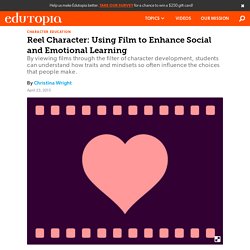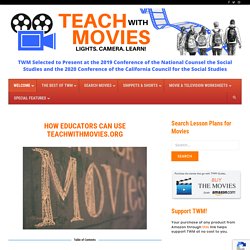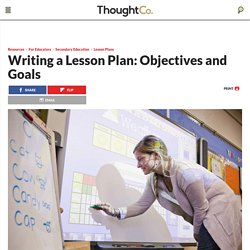Zoom
Trash

Great Project Tools. REMEMBER THE TITANS – TEACH WITH MOVIES. Additional Discussion Questions. 1.

What events in the film show that “sometimes life is just hard for no reason”? Suggested Response: The two automobile accidents that Bertier was involved in. The first accident paralyzed him and the second killed him. 2. Yes and no. The four questions which follow relate to rites of passage. 3. A rite of passage is a ritual or ceremony which marks the transition from one stage of life to another. 4. These include birth (and its associated rites such as a christening or bris), becoming an adult (a Bar Mitzvah or a Bat Mitzvah, Quinceanera), marriage (a wedding), death (a funeral or memorial service). 5. There is no one agreed upon right of passage to adulthood in modern Western Society. 6. It can. 7. There is no one right answer. 8. The desire to win sets a context in which the true beneficial lessons of sports can be taught. For more questions, see TWM’s Standard Questions Suitable for Any Film That is a Work of Fiction.
Using Film Study to Teach Perspective Taking in High School Students with Autism and Other Social Cognition Challenges. *Corresponding Author: Eve Muller, The Ivymount School, Inc., 11614 Seven Locks Road, Rockville, MD 20854, USA, Tel: 301-779-5171, Email: emuller@ivymount.org Received Date: Dec 08, 2017 / Accepted Date: Dec 20, 2017 / Published Date: Dec 27, 2017 Keywords: Autism spectrum disorder; High functioning autism; Asperger Syndrome; Film study; Social cognition; Perspective taking; Social and emotional understanding; Theory of mind Introduction Perspective taking refers to the process by which a person temporarily suspends his or her own point of view towards an object or event in order to assume another person’s point of view [1].

This can occur visually, by imagining what something looks like from another’s physical location, or cognitively, by imagining another’s mental point of view. For most children, perspective taking or ToM skills develop organically, and as a natural outgrowth of interacting with others. Why is this? Teaching perspective taking to students with ASD Method Participants.
Reel Character: Using Film to Enhance Social and Emotional Learning. The days of needing to enter a Cinemaplex to watch a movie are gone with the wind.

All we need do is turn on our laptop computers or mobile devices and a world of streaming media awaits us. And out of the more than seven hours a day that the average youth spends using media, 50 percent is exclusively devoted to film and television. Character Development by Example Social studies professors and authors William Benedict Russell III and Stewart Waters note in their book Reel Character Education: A Cinematic Approach to Character Development that film plays a significant role in our lives and pop culture, often provoking meaningful inquiry regarding social issues, personal values, and moral dilemmas.
Thus, film can serve as a powerful teaching tool to assist youth, in particular, in developing various character strengths and making positive decisions. Exactly what power do these visual images possess? Character Traits: To Practice or Not to Practice? Preparation. FOR TEACHERS – TEACH WITH MOVIES. TWM features more than 30 films on science, technology, aviation, space exploration, and medicine.

If you want to inspire girls to become scientists, tell them that a woman was the first person to win two Nobel Prizes in science. Then suggest that they watch the classic, Madame Curie. (Boys love this film, too.) For 4th – 9th grades, have students watch Galileo: On the Shoulders of Giants, which is crammed with delightful physics lessons. Extra credit homework assignments can easily be adapted from the Learning Guides for these films. Back to the Top There are many excellent and accessible renditions of Shakespeare on film. One high school teacher introduces her students to Walt Whitman by showing the film Beautiful Dreamers. Many classics of literature have been made into movies. Some literature is difficult for modern readers. Many foreign language films are sold or rented with subtitles. UDL Guidelines Checklist.
UDL Guidelines Organizer. Ela standards. Lesson plan english 6 -comparative form adverb. Objectives and Goals of a Lesson Plan. Objectives, also known as goals, are the first step in writing a strong lesson plan.

This article includes descriptions of the objectives of lesson plans, how to write them, examples, and tips. Goal-Writing Tips Whenever possible, write clearly-defined and specific objectives (goals) that are easy to measure. That way, at the conclusion of your lesson, it will be relatively easy to determine if you met or missed your objectives, and by how much. Objective In the objectives section of your lesson plan, write precise and delineated goals for what you want your students to be able to accomplish after the lesson is completed. What to Ask Yourself In order to define your lesson's objectives, consider asking yourself the following questions: What will students accomplish during this lesson? Additionally, you will want to make sure that the lesson's objectives align with district and state educational standards for your grade level.
Examples. Objectives and Goals of a Lesson Plan.